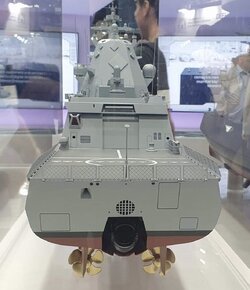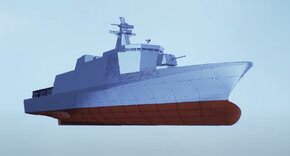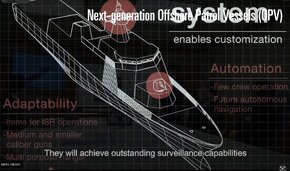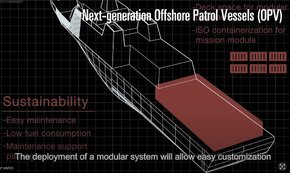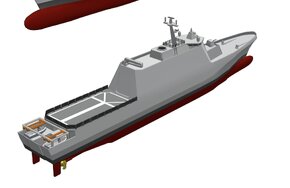Given how much we actually know about the OPV design for Japan (not much actually) then we really are not in a good position to compare that to the Arafura-class OPV. We do know that the Arafura-class OPV's are to have at least elements of the 9LV CMS, so that would likely have driven at least some of the cost differences. I would also expect that a Japanese yard might be less expensive for a broadly similar vessel, simply because the Japanese gov't has worked out and stuck to a schedule of regularly placed orders, ensuring continuous build activities at their domestic naval yards. Meanwhile, Australia has been enamoured with build/bust cycles of naval construction, as well as changing build sites between programmes.
Another thing to keep in mind about the pricing, is that the USD$66 mil. per ship price was from 2022 IIRC, which could also have changed quite a bit given how much inflation has occurred recently.
Me being me, I would much prefer that people make a real case for getting more OPV's, before suggesting the next shiny new 'thing' to get in place of or in addition to the current OPV's for the RAN.
Australia does and will continue to need patrol assets, but TBH they really do not add much warfighting capability and therefore I would much prefer to have the RAN and ADF concentrate more upon naval vessels which will contribute to Australian warfighting,
The constabulary function is a national need across land,sea and air.
It must be allocated to a department/ service and in the maritime context,vessels acquired.
For good or bad it falls mainly in the domain of Navy and Border Force.
The basic reality is the nation needs to spend coin and human capital to provide this service.
Today and in the foreseeably future this will not change, so please let’s accept that part of Navy’s budget is for the constabulary role.
It realistically does not take from other stuff!
Conceivably the OPVs and Capes could all go to Border Force and there would be a reduction in Navy staffing and finances because of this transfer.
Like all of the national needs, the Government still has to fund the function and a department to administer it.
So a case for OPVs
Australia is a bloody big island surrounded by massive ocean expanses on three sides with one of the largest island archipelago’s on the other.
We need constabulary vessels in appropriate numbers to provide the range and perseverance for this Maritime challenge.
Capes are fine for part of this role in conjunction with something bigger
The government stated they want 20 OCV then 12 OPVs.
Any other comparable western maritime nation has this sort of mix with a maritime domain much less than ours.
We NEED big off shore constabulary vessels in respectable numbers.
Yet what are we getting, six OPVs.
Whats the price difference between a Cape and a Arafura or something bigger?
Same for staffing and running cost.
Just not a deal breaker for a nation of economic size
It’s chicken feed.
Cutting the OPVs numbers from the original twelve will result yet again another repeat of the past when our increasingly limited number of majors will be seconded to perform constabulary maritime roles at distance.
Add to the pain the manned MCM and Survey vessels which are not to be replaced have at times performed as back up constabulary vessels. Not ideal, but necessary at that point in time.
Navy are just down on vessel numbers over all.
OPVs in the scheme of things are small change for both coin and personal yet offer so much in the range of things they can do.
Cheers S

